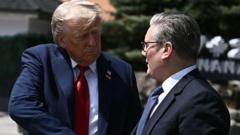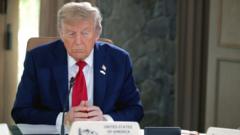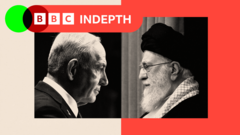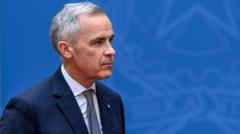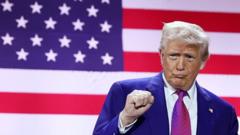In a contentious election shaped by U.S. tariffs, Canadians vote for their next leader, focusing on trade relations with Trump.
Canada Elects Leader Amidst Tensions with U.S. Trade Policies

Canada Elects Leader Amidst Tensions with U.S. Trade Policies
Prime Ministerial candidates battle over tariffs and relations with Trump as Canada votes.
As Canadians head to the polls today, the stakes are particularly high amid rising tensions over trade with the United States. The election pits the current Prime Minister Mark Carney of the Liberal Party against Pierre Poilievre, the Conservative leader, both of whom have expressed a commitment to stand firm against President Trump’s contentious trade policies. This election can be viewed as not just a political contest, but a referendum on how Canada will navigate its relationship with its largest trading partner under an increasingly aggressive U.S. policy.
During last week's election debate, Carney emphasized the need for a strong negotiating position with the Trump administration, citing that “the starting point has to be one of strength.” His Conservative rival, Poilievre, has echoed this sentiment, emphasizing the necessity of imposing retaliatory tariffs similar to Trump's actions that have jeopardized Canadian jobs and industries. President Trump’s tariffs, including 25% levies on crucial Canadian sectors such as automotive, aluminum, and steel, have generated widespread concern about job losses in Canada.
The candidates have outlined different strategies to combat these challenges. Carney has highlighted the importance of retaliatory tariffs to protect Canadian interests, while also prioritizing the diversification of Canada’s trade alliances. He has recently traveled to meet with European leaders, signaling potential trade expansions outside of U.S. markets.
On the other hand, Poilievre aims to increase Canada’s energy exports to Europe, arguing for the development of infrastructure, including pipelines, essential for achieving this goal. Furthermore, Carney has proposed initiatives to foster an “all-in-Canada” approach for auto parts manufacturing to reduce reliance on cross-border supply chains.
Both candidates are attempting to connect with voters on issues beyond the trade war as well; however, Trump’s recent comments regarding the potential annexation of Canada have amplified patriotic sentiments among voters. Current polling suggests a tight race, with the Liberals holding a slight edge, but the overall outcome remains uncertain as Canadians weigh their preferences amid a backdrop of geopolitical complexities. As the election unfolds, the key question remains: who can better champion Canada's interests in a fraught relationship with the U.S.?




